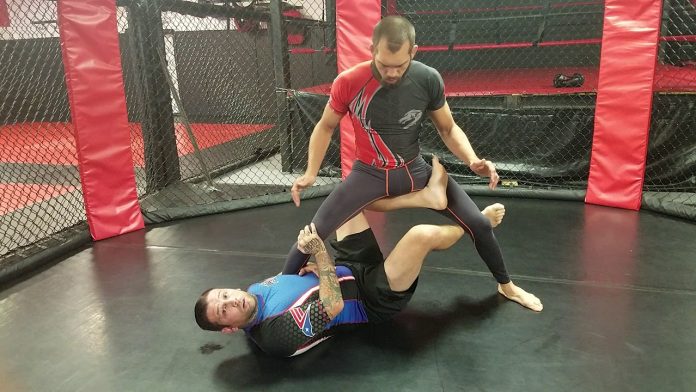
What is the best offensive guard you can play? the answer is not simple since it all depends on many different actors. However, if there’s one general rule, then being able to manipulate your opponent’s base and/or posture without much effort is definitely high on the requirements list. As such, there is one category of BJJ guards that stands out. Those are all the guard variations that put you underneath your opponent. Depending on your goal, different guards, give you different attacking options. Some are easier to maintain, while others are top submissions hunting spots. The X guard is usually seen as a transitional guard, most effective for sweeping. However, there are plenty of X guard submissions as well, and most of them are in the leg lock department.
What usually defines the effectiveness of a guard is distance. Different guards work from different ranges. In general, there are four main ranges – far, medium, close, and underneath. Using a far distance guard to grapple from a close distance is going to end up in disasters most of the time. A good example of a far distance guard is the spider guard. The Reverse De La Riva is a medium distance guard. Closed / half guard variations are mostly close distance guards. X guard variations, 50/50, deep half, etc. are great representatives of guards that work from underneath the opponent. While most people are used to single leg X guard submissions, the classic X also has a lot to offer. Particularly in the area of lower body submissions.
X Guard Submissions
The X guard is a staple of Brazilian Jiu-Jitsu, and one of the most useful open guards out there. It works just as well in both Gi and No-Gi and is one of the rare guards that doesn’t require any modification. The same grips apply just as well with the kimono as they do without it.
The most basic X guard position is when you have one leg of your opponent over your shoulder, hooked inside-out with your nearest arm. Both your feet crisscross on the inside of the thigh of the opposite leg, thus resulting in an X pattern. The far side arm usually looks to grip an arm, the lapel, or help you post for attacks. Speaking of attacks, X guard submissions can be as much a part of this versatile guard as sweeps are. The only thing you need to know is how to sue the structure that the X guard provides to get right into them.
Controlling the near side leg can be done with both an under and an overhook from the X guard. This is an important fact because both open up different submission possibilities. It is obvious that the structure of the X guard places you in a perfect position to hunt for leg locks. Both legs are wide apart, and you’re in control of both the distance and elevation. with a few strategically placed grips, you can hit just about any lower body submission there is from the X guard. Also, check the most dynamic x-guard sweep to back take.
Heel Hook
Let’s start directly with the highest percentage lock there is – the heel hook. One thing to know is that while there are plenty of X guard submissions available on the legs, none of them work directly from there. To successfully get a leg lock, you’ll need to use the advantage of the X guard to get into an Ashi Garami.
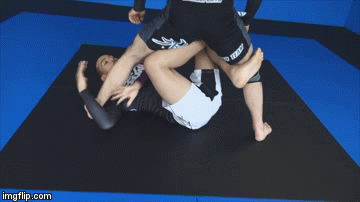
From there it is as easy as getting both legs out and projecting your hips upwards. This is going to allow you to swing one leg over their hip, using the momentum to both get them to the mat and into an Ashi Garami. From there. The heel hook is right there even before they hit the ground.
Toe Hold
The toe hold is a complicated submission to get from any position. Yet, it still features among the X guard submissions that actually work. What you need to be really careful of is the fact that the Ashi Garami you’re going to be doing a toe hold from, is illegal under IBFFJ rules. At all belt levels.
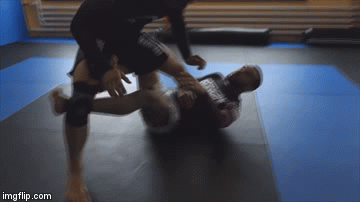
Knee Bar
The kneebar from the X-guard is a classic attack and one of the first I learned from the position. It doesn’t take a lot of work to get there, but it does have a bit of a complicated turning motion. The attack is going to be on the near side leg, which is something many people struggle with. The direction of turning is also important, as it has to be from the inside and going to the outside of their leg.
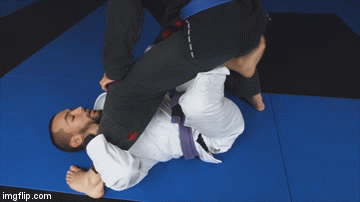
Calf Slicer
This one is a true favorite of mine, as most people go straight into it themselves. Unlike most calf slicer options, this one works with your arms and shoulders instead of your legs. It also requires a certain understanding of how both X guard submissions and sweeps work. In some cases, you won’t able to get your opponent off balance long enough to set up a direct leg look. In such a case, push their far leg as far as possible and immediately get into a technical stand-up. This is going to land you in a position where you’re standing, and you have your opponent’s leg on your shoulder.

Ankle Lock
A series of X guard submissions featuring leg locks won’t be complete without an ankle lock. After all, it is the one X guard submission anyone can do, legally speaking. Once again, we’ll focus on a Gi setup here. The same thing can work in No-Gi too, just with a different grip for the posture break.
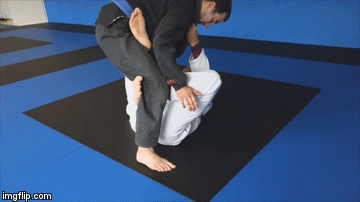
The Reverse X Guard
Apart from all the regular X guard submissions, there’s also a modified Xguard for leg locks. The reverse X guard is a very leg lock specific guard. In essence, it is not really much different from the regular X Guard. All you need to do is switch the position of your hooks. Your bottom leg is no going to be on top, and vice versa. This very simple little adjustment is essential. It allows you to enter the most powerful Ashi Garami attack available.
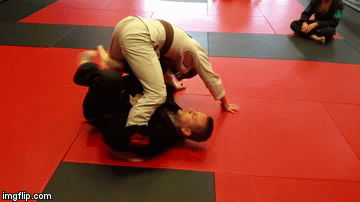

(Warning) Loud Snap of Tibia and Fibula as a Result of a Leg Lock


![Darce Choke Encyclopedia – Origins, Mechanics and Variations [2025] BJJ, choke, Brabo, BJJ Darce Choke, D'arce Choke, Darce BJJ Choke](https://bjj-world.com/wp-content/uploads/2017/11/JungPoirierLeeYahoo-218x150.jpg)









![Slicin’ Calves Mikey Musumeci DVD Review [2025] Slicin' Calves Mikey Musumeci DVD Review](https://bjj-world.com/wp-content/uploads/2025/04/slicin-calves-mikey-musumeci-dvd-review-218x150.png)
![Jiu-Jitsu For Old Guys Guard Retention Bernardo Faria DVD Review [2025] Jiu-Jitsu For Old Guys Guard Retention Bernardo Faria DVD Review](https://bjj-world.com/wp-content/uploads/2025/03/old-guys-guard-retention-bernardo-faria-dvd-review-218x150.png)
![X-Guard Trickery Kyle Sleeman DVD Review [2025] X-Guard Trickery Kyle Sleeman DVD Review](https://bjj-world.com/wp-content/uploads/2025/03/x-guard-trickery-kyle-sleeman-dvd-review-218x150.png)
![Countering with Crab Ride Anthony Budion DVD Review [2025] Countering with Crab Ride Anthony Budion DVD Review](https://bjj-world.com/wp-content/uploads/2025/03/countering-with-crab-ride-anthony-budion-dvd-review-218x150.png)
![Closet Closed Guard Craig Jones DVD Review [2025] Closet Closed Guard Craig Jones DVD Review](https://bjj-world.com/wp-content/uploads/2025/03/closet-closed-guard-craig-jones-dvd-review-218x150.png)
![Xanadu Back Takes Levi Jones-Leary DVD Review [2025] Xanadu Back Takes Levi Jones-Leary DVD Review](https://bjj-world.com/wp-content/uploads/2025/03/xanadu-back-takes-levi-jones-leary-dvd-review-218x150.png)






![The Empty Half Guard Michael Currier DVD Review [2025] The Empty Half Guard Michael Currier DVD Review](https://bjj-world.com/wp-content/uploads/2025/03/empty-half-guard-michael-currier-dvd-review-100x70.png)
![Bricks Kesa Gatame System Jeremy Brick DVD Review [2025] Bricks Kesa Gatame System Jeremy Brick DVD Review](https://bjj-world.com/wp-content/uploads/2025/02/bricks-kesa-gatame-system-jeremy-brick-dvd-review-100x70.png)


![Roger Gracie Closed Guard System DVD Review [2025] Roger Gracie Closed Guard System DVD Review](https://bjj-world.com/wp-content/uploads/2025/01/roger-gracie-closed-guard-system-dvd-review-100x70.png)
![Complete Front Headlock System Michael Pixley DVD Review [2024] Complete Front Headlock System Michael Pixley DVD Review](https://bjj-world.com/wp-content/uploads/2024/10/front-headlock-system-michael-pixley-dvd-review-100x70.png)

![No-Gi Defense Xande Ribeiro DVD Review [2024] No-Gi Defense Xande Ribeiro DVD Review](https://bjj-world.com/wp-content/uploads/2024/11/no-gi-defense-xande-ribeiro-dvd-review-100x70.png)





![Dynamic Headquarters Passing Jason Rau DVD Review [2024] Dynamic Headquarters Passing Jason Rau DVD Review](https://bjj-world.com/wp-content/uploads/2024/10/dynamic-headquarters-passing-jason-rau-dvd-review-100x70.png)


![Lockdown Quickstart Guide Cameron Mellott DVD Review [2025] Lockdown Quickstart Guide Cameron Mellott DVD Review](https://bjj-world.com/wp-content/uploads/2025/03/lockdown-quickstart-guide-cameron-mellott-dvd-review-100x70.png)
![Shoulder Lock Mastery Zach Green DVD Review [2025] Shoulder Lock Mastery Zach Green DVD Review](https://bjj-world.com/wp-content/uploads/2024/12/shoulder-lock-mastery-zach-green-dvd-review-100x70.png)
![360 Degrees Guard Retention Thiago Abud DVD Review [2024] 360 Degrees Guard Retention Thiago Abud DVD Review](https://bjj-world.com/wp-content/uploads/2024/10/360-degrees-guard-retention-thiago-abud-dvd-review-100x70.png)
![Giancarlo Bodoni DVD Bundle Essential Connections Full Review [2024] Giancarlo Bodoni DVD Bundle Essential Connections Full Review](https://bjj-world.com/wp-content/uploads/2024/09/giancarlo-bodoni-dvd-bundle-essential-connections-100x70.png)
![Dynamic De La Riva Guard Otavio Sousa DVD Review [2025] Dynamic De La Riva Guard Otavio Sousa DVD Review](https://bjj-world.com/wp-content/uploads/2025/02/dynamic-de-la-riva-guard-otavio-sousa-dvd-review-100x70.png)

